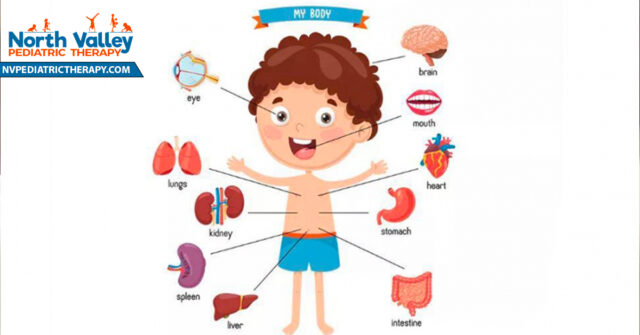When exploring a new food with your picky eater, it is easy to fall into the trap of simply wanting your child to eat what is placed in front of them. This expectation can easily lead to frustration and negative feelings surrounding food and meal time for all involved. Let’s take the pressure off and explore possible scenarios.
Scenario 1: “My kid gags immediately upon smelling/looking at/tasting something new or non-preferred.”
What to do: Remain calm and let your kiddo know that sometimes we gag when our bodies are learning something new (e.g. a new texture, smell, flavor, etc.). Encourage calming techniques in your child such as taking a deep breath. Depending on the age of your child, you could simply state a gag is meant to protect our body. Keep it ‘matter of fact’ instead of ‘overreact’. If you overreact to your child’s hypersensitive gag reflex, it’s easy to further dysregulate your child as they explore a given food.
Scenario 2: “My child will touch nothing on their plate.”
What to do: Have a ‘bye-bye’ bowl available for your child as they explore less preferred food items during meals (e.g. place a bowl near the child to discard foods being explored). This will alleviate the pressure to eat something they are not ready to eat, but still allows exposure to a given food (i.e. sight, smell, touch, possibly taste). They may even be ready and willing to ‘kiss goodbye’ foods. If they are not ready to touch foods offered, provide them with a utensil to scoop non-preferred food into the ‘bye-bye’ bowl. You could also decrease the amount of non-preferred food placed on your child’s plate, as the sheer amount of food may be overwhelming to your explorer.
Scenario 3: “My child will pocket everything like a squirrel and have to spit out their food!”
What to do: Use a variety of spices, crunchy textures, and temperature (hot vs. cold). All of this will help bring awareness to your child and ‘wake up the mouth’ as well as help your feeder avoid pocketing. Be mindful of how large a bite is. Some foods such as meat and vegetables require increased endurance and motor control to chew and break down. If your child has lower muscle tone, they will fatigue faster. Ensure your child is given appropriate bite sizes based on their skill level.
Scenario 4: “I want my kids to eat vegetables, but I don’t eat them myself!”
What to do: Children learn a lot through modeling. If you as a parent refuse to eat specific food groups, this could result in unique challenges during feeding. The same goes for “messier” foods. If a food is messy, and you as the parent are unwilling to touch and model exploration, then it’s safe to say that your child will also refrain from ‘getting messy’ and exploring. Do not be afraid to model and play with food alongside your child. Food is fun! We should also model what is expected of our children to increase their overall understanding of and acceptance of a variety of foods. Siblings can also serve as wonderful peer models during meals.
Scenario 5: “My child will often tell me how disgusting, yucky, or gross my cooking is and refuses to even try something I believe he would enjoy!”
What to do: Encourage your child to take part in meal preparation so that they can visualize and explore all the ingredients going into a dish. This way, they have an opportunity to see, smell, touch and perhaps even taste individual ingredients as they participate in meal preparation. Mixed consistencies can be very challenging for our food explorers. It is also encouraged to describe foods using ‘science words’ (i.e. wet, dry, crunchy, sticky, big smell, small smell, etc.) rather than ‘judgment words’ (i.e. good, bad, junk food, healthy food, yucky, yummy, etc.).
Take away:
Be patient, and meet your child where they are! Trying to ‘force’ them to eat something new or non-preferred will have lasting negative effects. Not to mention, if feeding is made stressful, you can count on your child losing their appetite. Praise early and often as they begin to play with, touch, kiss, lick, and taste different foods. Model the behaviors you want to see in your explorer! We can all learn through play. It is also highly recommended to rule out any possible food allergies which could significantly impact your child’s food intake.
If feeding concerns persist and there are concerns with your child’s nutritional needs, or if your child presents with difficulty in swallowing, please address your concerns with your pediatrician immediately. They will benefit greatly from a feeding evaluation by a trained clinician.
Written by: Lisette Boal M.S., CCC-SLP




